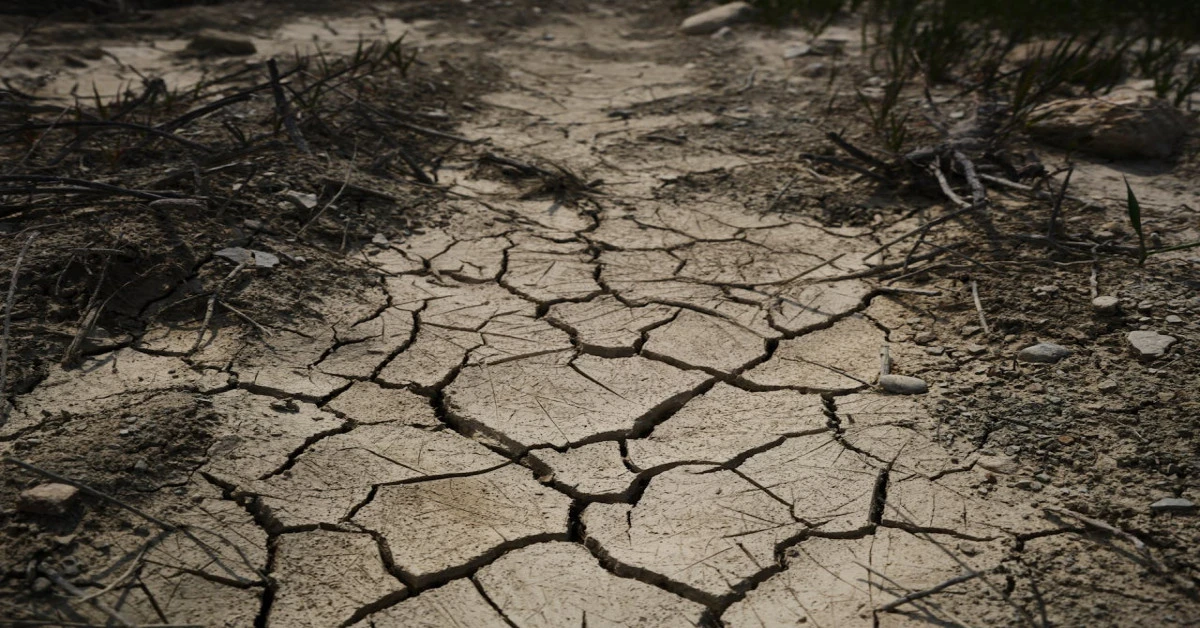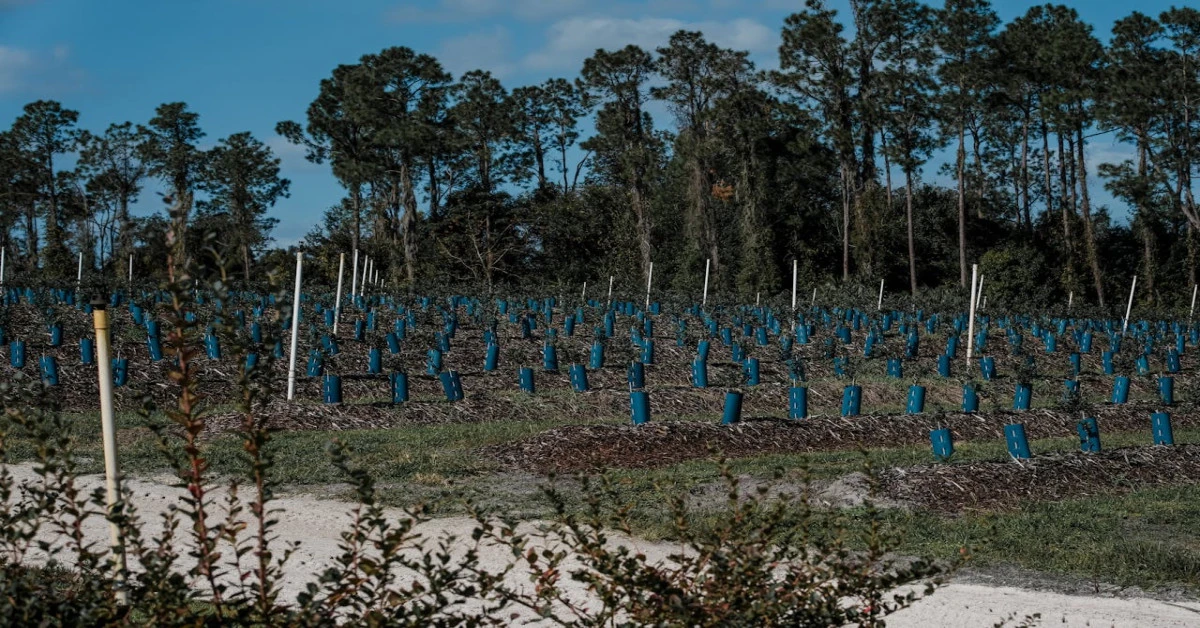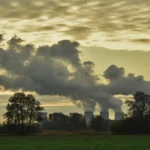Forests are essential for life on Earth, providing oxygen, shelter, and climate regulation. However, human activities are rapidly changing forest landscapes.
Afforestation refers to planting trees in areas where there were none before, while deforestation is the removal of forests, often for agriculture or urban development.
Both practices have significant environmental, economic, and social effects. Deforestation contributes to climate change, biodiversity loss, and soil erosion. In contrast, afforestation helps restore ecosystems, improves air quality, and combats global warming.
For example, large-scale afforestation projects, such as the Great Green Wall in Africa, aim to reduce desertification and revive degraded land.
This post explores afforestation and deforestation, their causes, consequences, and solutions. Understanding their impacts is crucial for balancing development with environmental protection. By promoting afforestation, we can work towards a greener, healthier planet for future generations.
What is Afforestation?
Afforestation is the process of planting trees in areas where there were none before. It differs from reforestation, which involves restoring forests that have been destroyed or degraded. Afforestation creates new green spaces, while reforestation focuses on repairing existing forests.
This practice is essential for environmental sustainability. Trees absorb carbon dioxide, helping to reduce global warming. They also prevent soil erosion, improve air quality, and support biodiversity. Without forests, many animals lose their natural habitats, leading to species decline.
Several countries have launched afforestation projects to combat climate change. For example, China’s Three-North Shelterbelt Project, also known as the “Great Green Wall,” aims to stop desert expansion.
Similarly, India’s Green India Mission works to increase forest cover and protect ecosystems. These projects show that afforestation is a powerful tool for restoring nature.
What is Deforestation?
Deforestation is the large-scale removal of forests, often for human activities. Unlike natural forest loss due to wildfires or disease, deforestation is mainly caused by agriculture, logging, and urban expansion. As forests disappear, the planet faces serious environmental challenges.
One major driver is agriculture. Farmers clear land to grow crops and raise livestock, especially in tropical regions. Logging also plays a role, with trees cut for timber, paper, and fuel. Additionally, urbanization and infrastructure development destroy forests to build roads, cities, and industries.
Deforestation is happening at an alarming rate. According to the World Bank, the world loses around 10 million hectares of forest annually. The Amazon rainforest, often called the “lungs of the Earth,” is shrinking rapidly. If deforestation continues, the effects on climate and biodiversity will be severe.

Major Causes of Deforestation
Deforestation occurs due to both human activities and natural causes. The biggest threat comes from agriculture, as forests are cleared for palm oil, soy, and cattle farming. This is especially common in Brazil, Indonesia, and Africa.
Other major causes are commercial agriculture, mining and is illegal logging. Many companies harvest timber without following environmental laws, leading to uncontrolled deforestation. Additionally, mining operations require large areas of land, destroying forest ecosystems in the process.
Urbanization and road construction also contribute significantly. Expanding cities require more land for housing, industries, and infrastructure. New roads cut through forests, fragmenting habitats and making it easier for illegal loggers to access remote areas. Over time, these developments lead to permanent forest loss.
Natural disasters like wildfires and droughts also contribute to deforestation. Climate change increases the frequency of these events, making forests more vulnerable.
Without action, continued deforestation will lead to severe environmental consequences, including loss of biodiversity, increased carbon emissions, and disrupted water cycles.
Also Read: Environmental Education Programmes: Importance & Need
Positive Effects of Afforestation
Afforestation plays a crucial role in maintaining environmental balance and supporting economic growth. The effects of afforestation extend beyond just greenery—it benefits the air, soil, and even communities.
By promoting afforestation, we can tackle deforestation-related issues like air pollution, land degradation, and loss of biodiversity. Below are some key benefits of afforestation for the environment, economy, and society.
Environmental Benefits of Afforestation
Improved Air Quality: Trees act as natural air purifiers. They absorb pollutants like carbon monoxide, sulphur dioxide, and nitrogen oxides, making the air cleaner. Leaves trap dust and harmful particles, reducing respiratory issues in humans.
Urban afforestation projects, such as city parks, have significantly improved air quality in major cities like New York and Beijing.
Carbon Sequestration: One of the most important effects of afforestation is carbon sequestration. Trees absorb carbon dioxide from the atmosphere and store it in their trunks, branches, and roots. This process reduces greenhouse gas levels, slowing down global warming.
Large-scale afforestation programs, such as China’s “Great Green Wall,” have helped lower carbon emissions and restore degraded lands.
Prevention of Soil Erosion & Fertility Enhancement: Afforestation helps stabilize the land by preventing soil erosion. Tree roots bind the soil, reducing the impact of wind and water. This is especially important in hilly and dry regions where landslides and desertification are common. Additionally, decomposing leaves enrich the soil with nutrients, improving its fertility for agriculture.
Economic and Social Benefits of Afforestation
Provides Raw Materials: Forests are precious resources, grown through afforestation provide valuable raw materials such as timber, paper, and medicinal plants. Sustainable forestry ensures that trees are harvested responsibly, allowing future generations to benefit.
Countries like Finland and Canada have successfully balanced timber production with conservation efforts.
Generates Employment: The forestry sector creates jobs in planting, harvesting, and conservation. Workers are needed for tree nurseries, forest management, and research programs. In developing countries, afforestation projects provide income for rural communities, improving their standard of living.
Boosts Eco-Tourism: Afforestation promotes eco-tourism by creating national parks and wildlife reserves. Tourists visit these green spaces for activities like hiking, birdwatching, and camping. This generates revenue for local businesses and supports conservation efforts.
Countries like Costa Rica have turned afforestation into a major source of tourism income.
Afforestation is a powerful tool for environmental restoration and economic growth. By investing in tree-planting projects, we can build a healthier planet while supporting sustainable development.
Impacts of Deforestation
Deforestation has severe consequences for the environment, economy, and society. When forests disappear, the balance of nature is disrupted, leading to major issues like climate change, habitat loss, and declining agricultural productivity.
The effects of deforestation extend beyond local areas, impacting global ecosystems and human livelihoods.
Forests play a crucial role in regulating weather patterns, supporting biodiversity, and providing resources. However, large-scale tree removal accelerates environmental degradation and threatens the future of many communities.
Below are the key consequences of deforestation on nature and human life.
Environmental Consequences
Climate Change Acceleration: Forests absorb carbon dioxide and help regulate Earth’s temperature. When trees are cut down, stored carbon is released, increasing greenhouse gas levels. This leads to rising global temperatures, unpredictable weather, and extreme climate events.
The Amazon rainforest, often called the “lungs of the Earth,” is losing its ability to absorb CO₂ due to excessive deforestation.
Biodiversity Loss: Forests are home to 80% of the world’s terrestrial species. Deforestation destroys habitats, pushing animals and plants toward extinction. For example, orangutans in Borneo and tigers in India face shrinking populations due to forest loss.
When species disappear, ecosystems become unstable, affecting food chains and natural cycles.
Soil Degradation: Tree roots hold soil in place, preventing erosion. Without them, wind and water wash away topsoil, making land infertile. This process, called desertification, turns once-productive land into barren areas.
Countries like Madagascar have seen large-scale soil degradation, leading to food shortages and displacement of people.
Water Scarcity: Forests help maintain the water cycle by releasing moisture into the air, which forms clouds and produces rain. Deforestation reduces rainfall, leading to droughts and shrinking freshwater supplies.
In regions like the Sahel in Africa, tree loss has worsened desert conditions, making water even scarcer.

Economic and Social Consequences
Threat to Indigenous Communities: Many indigenous groups depend on forests for shelter, food, and culture. When forests are cleared, these communities lose their homes and way of life.
In the Amazon, deforestation has forced tribes to relocate, disrupting their traditions and survival. Their knowledge of medicinal plants and sustainable living is also at risk.
Increased Natural Disasters: Without trees to absorb water and hold soil, floods and landslides become more frequent. In countries like Nepal and Indonesia, deforestation has led to deadly landslides that destroy villages.
Removing forests also reduces natural barriers against storms, making communities more vulnerable to extreme weather.
Decline in Agricultural Yield: Deforestation initially clears land for farming, but over time, soil loses its nutrients. As a result, crops fail, reducing food production. This directly affects farmers and increases food prices globally.
In Brazil, soybean farming has replaced large forest areas, but soil depletion threatens future harvests.
The effects of deforestation are far-reaching, impacting both nature and human societies. Protecting forests is essential for climate stability, biodiversity, and sustainable development.
By promoting reforestation and responsible land use, we can mitigate these challenges and restore balance to the planet.
Difference between Afforestation and Deforestation
Afforestation and deforestation have opposite effects on the environment. While afforestation helps restore forests, deforestation leads to their destruction. Below is a clear comparison of their key differences.
| Aspect | Afforestation | Deforestation |
| Definition | Planting in barren or deforested areas | Clearing forests for agriculture or urbanization |
| Environment Impact | Improves air quality and prevents soil erosion. | Increases CO₂ levels and leads to habitat loss. |
| Economic Influence | Supports sustainable industries like timber and eco-tourism. | Provides short-term benefits but harms future resources. |
| Long-Term Sustainability | Helps in climate regulation and biodiversity conservation. | Causes soil degradation and disrupts ecosystems. |
Environmental Impact
Afforestation helps combat climate change by absorbing carbon dioxide and improving air quality. It also prevents soil erosion and enhances biodiversity. In contrast, deforestation increases greenhouse gases, leading to global warming. It destroys animal habitats and reduces rainfall.
Economic Influence
Forests provide valuable resources like timber, medicine, and food. Sustainable afforestation supports industries such as eco-tourism and forestry. Deforestation, however, offers immediate profits from land use but depletes natural resources over time. This leads to economic instability in the end.
Long-Term Sustainability
Afforestation ensures a greener future by maintaining ecological balance. It supports water cycles, fertile land, and wildlife. Deforestation, on the other hand, causes irreversible damage. It leads to desertification, frequent natural disasters, and a decline in agricultural productivity.
Solutions to Reduce Deforestation and Promote Afforestation
To protect the planet, we need strong measures to stop deforestation and encourage afforestation. Education, governments, businesses, and individuals all play a role in preserving forests.
Strategies to Reduce Deforestation
Awareness and Environmental Education: Educating people about the dangers of deforestation is key to protecting forests. Schools, media, and community programs can teach individuals about sustainable practices. When people understand the long-term effects, they are more likely to support conservation efforts.
Public campaigns and eco-friendly initiatives encourage responsible consumer choices. For example, using digital documents instead of paper helps reduce tree cutting. Governments and organizations can also promote awareness through social media, documentaries, and workshops.
Implement Strict Forest Conservation Laws: Governments must enforce laws that prevent illegal logging and large-scale deforestation. Protected forest reserves help preserve biodiversity and ecosystems.
Promote Sustainable Agriculture and Responsible Logging: Farmers can use agroforestry, which combines tree planting with farming, to reduce land degradation. Sustainable logging practices, like selective cutting and replanting, help balance forest use.
Encourage Recycling and Eco-Friendly Alternatives: Paper, furniture, and packaging contribute to deforestation. Using recycled materials and sustainable products reduces demand for forest resources. For example, bamboo and hemp-based products offer great eco-friendly alternatives.

Steps to Promote Afforestation
Government and NGO-Led Reforestation Campaigns: Organizations worldwide launch tree-planting projects to restore forests. Countries like India and China have large-scale afforestation programs that help combat climate change.
Incentives for Sustainable Land Management: Governments can provide financial rewards for farmers and businesses that engage in reforestation. Tax benefits and grants encourage responsible land use.
Community Involvement in Tree-Planting Initiatives: Local communities play a crucial role in afforestation. Schools, businesses, and volunteers can participate in tree-planting drives. Education and awareness campaigns also inspire action.
By adopting these strategies, we can slow down deforestation and promote a greener planet. Protecting forests is a shared responsibility, and every effort counts toward a sustainable future.
Conclusion
The battle between afforestation and deforestation is shaping the future of our planet. Deforestation causes biodiversity loss, soil degradation, and climate change, while afforestation restores ecosystems and improves environmental health. A balanced approach is necessary to ensure long-term sustainability.
Global efforts are needed to protect forests and promote afforestation. Governments must enforce conservation laws, businesses should adopt sustainable practices, and individuals can contribute by planting trees and making eco-friendly choices. Every small effort adds up to a larger impact.
Supporting afforestation initiatives and reducing deforestation can help preserve nature. Everyone has a role in this mission. Join tree-planting drives, spread awareness, and encourage sustainable living. Together, we can create a greener, healthier world.






